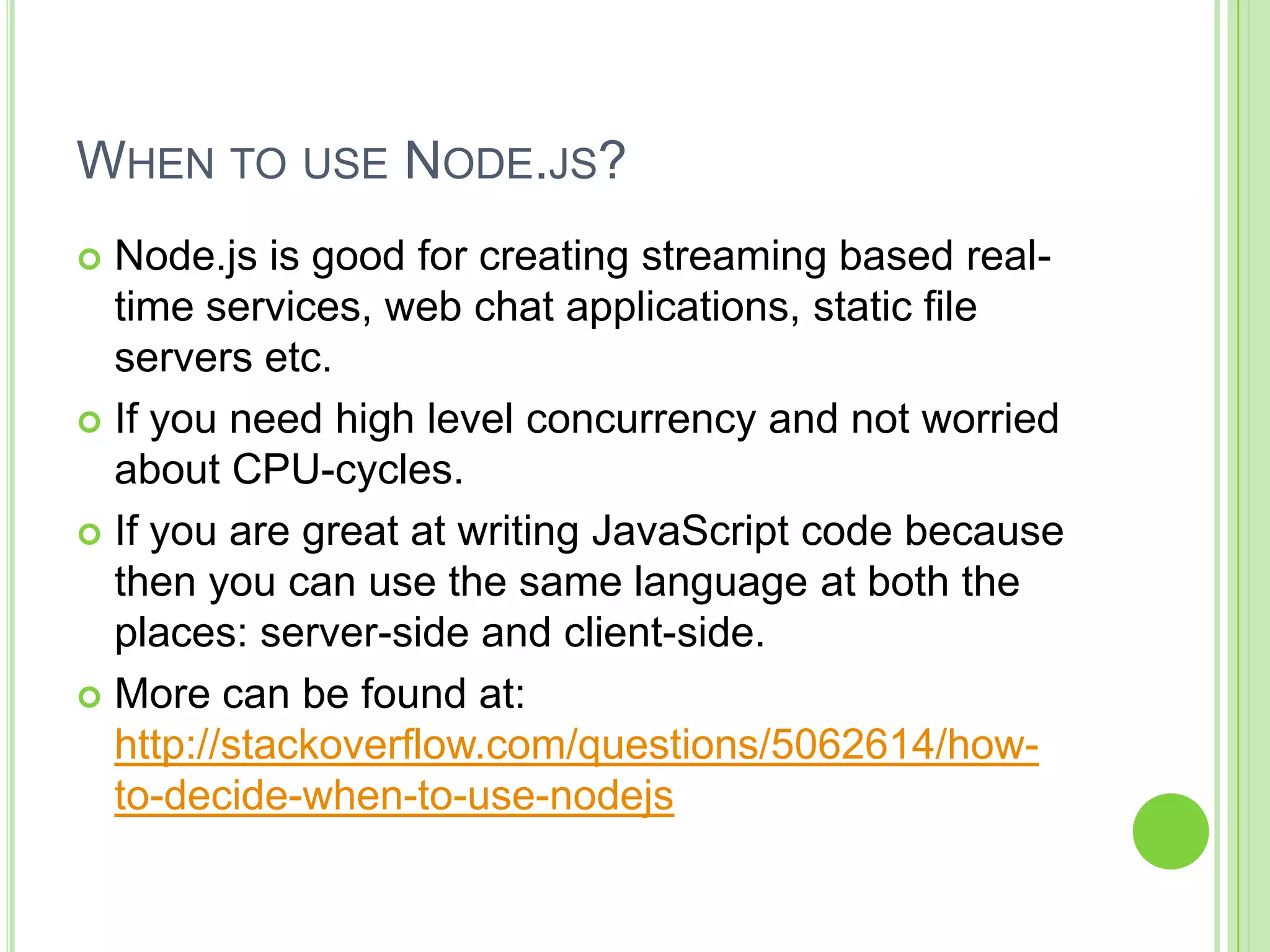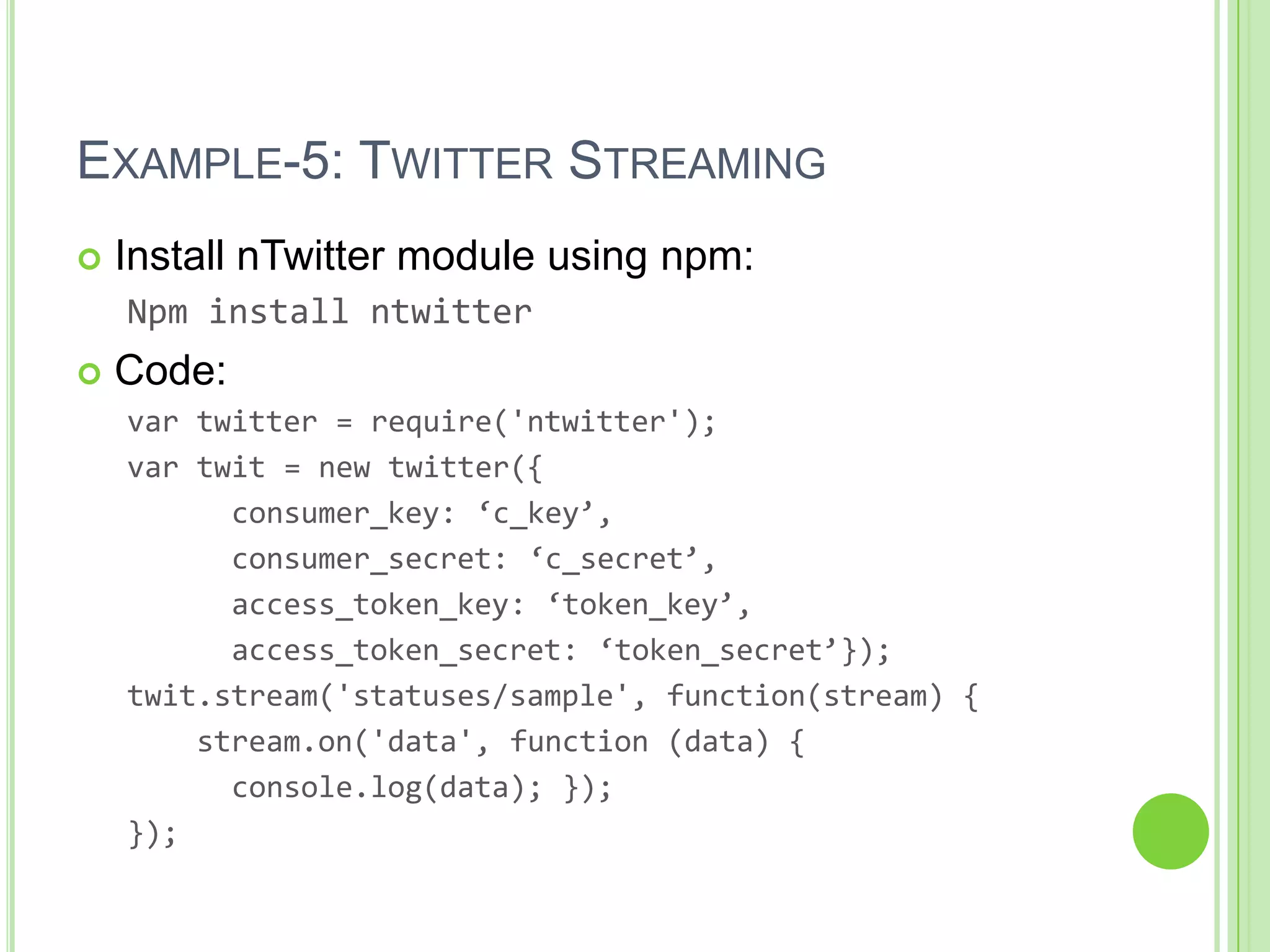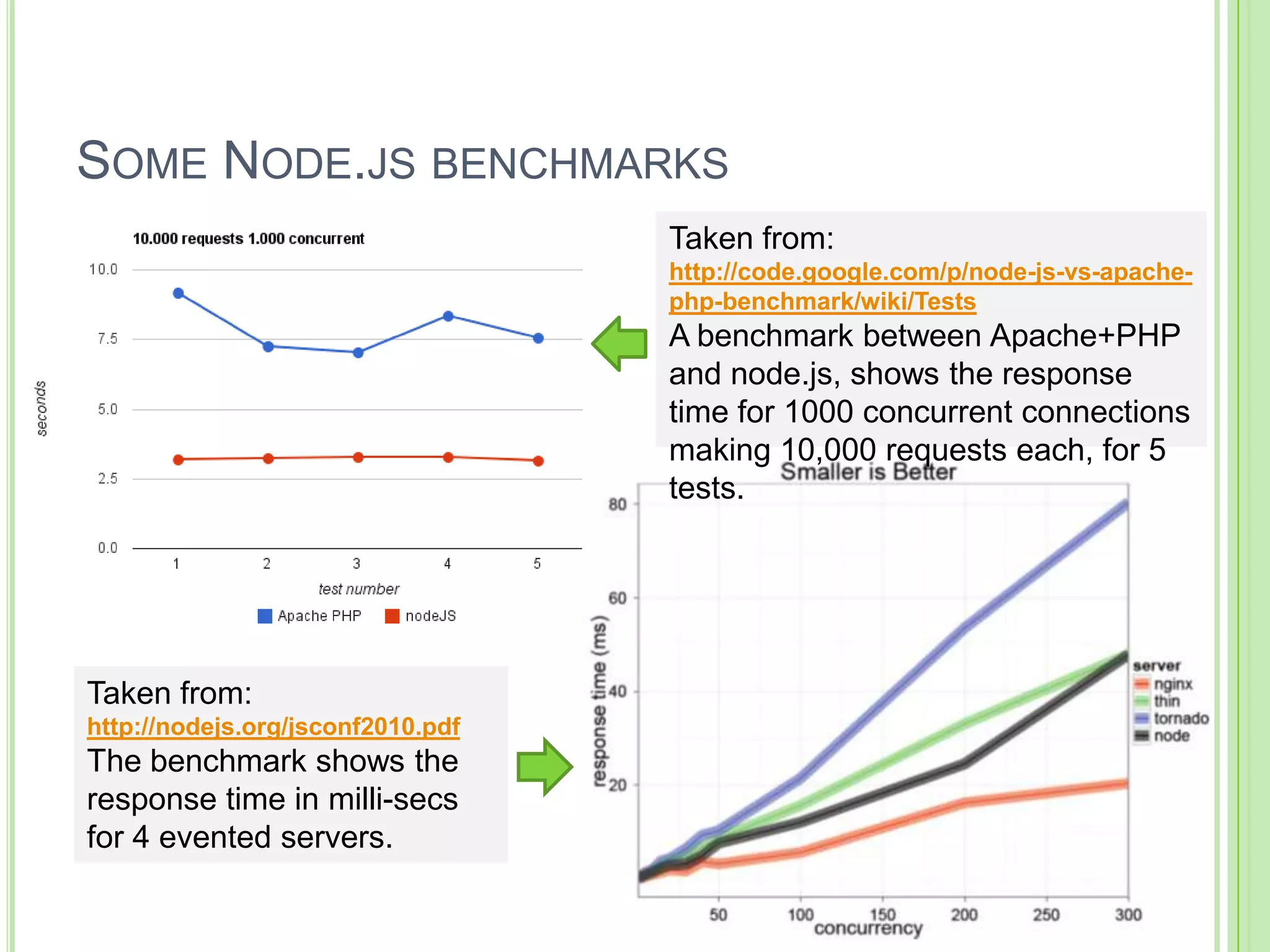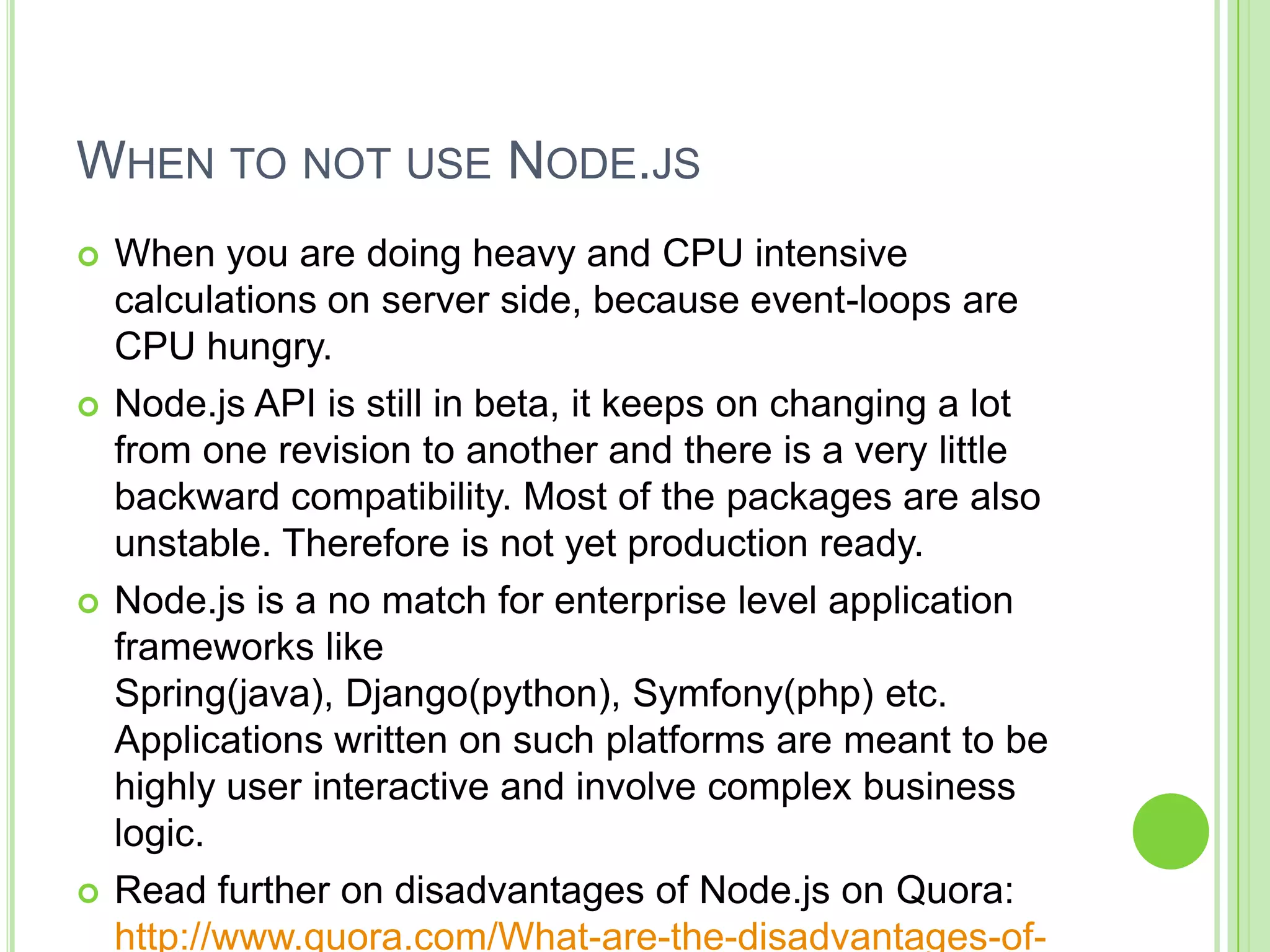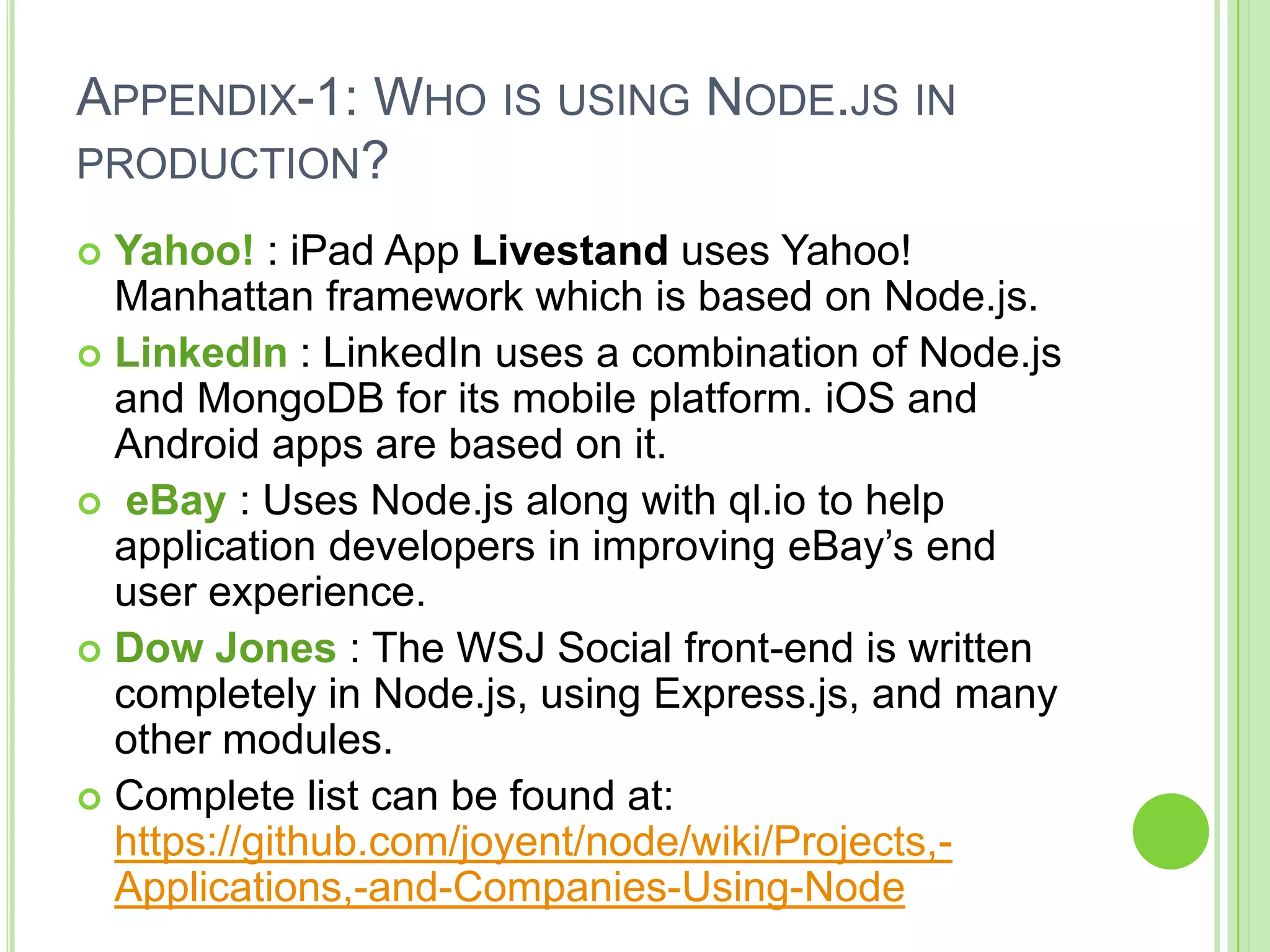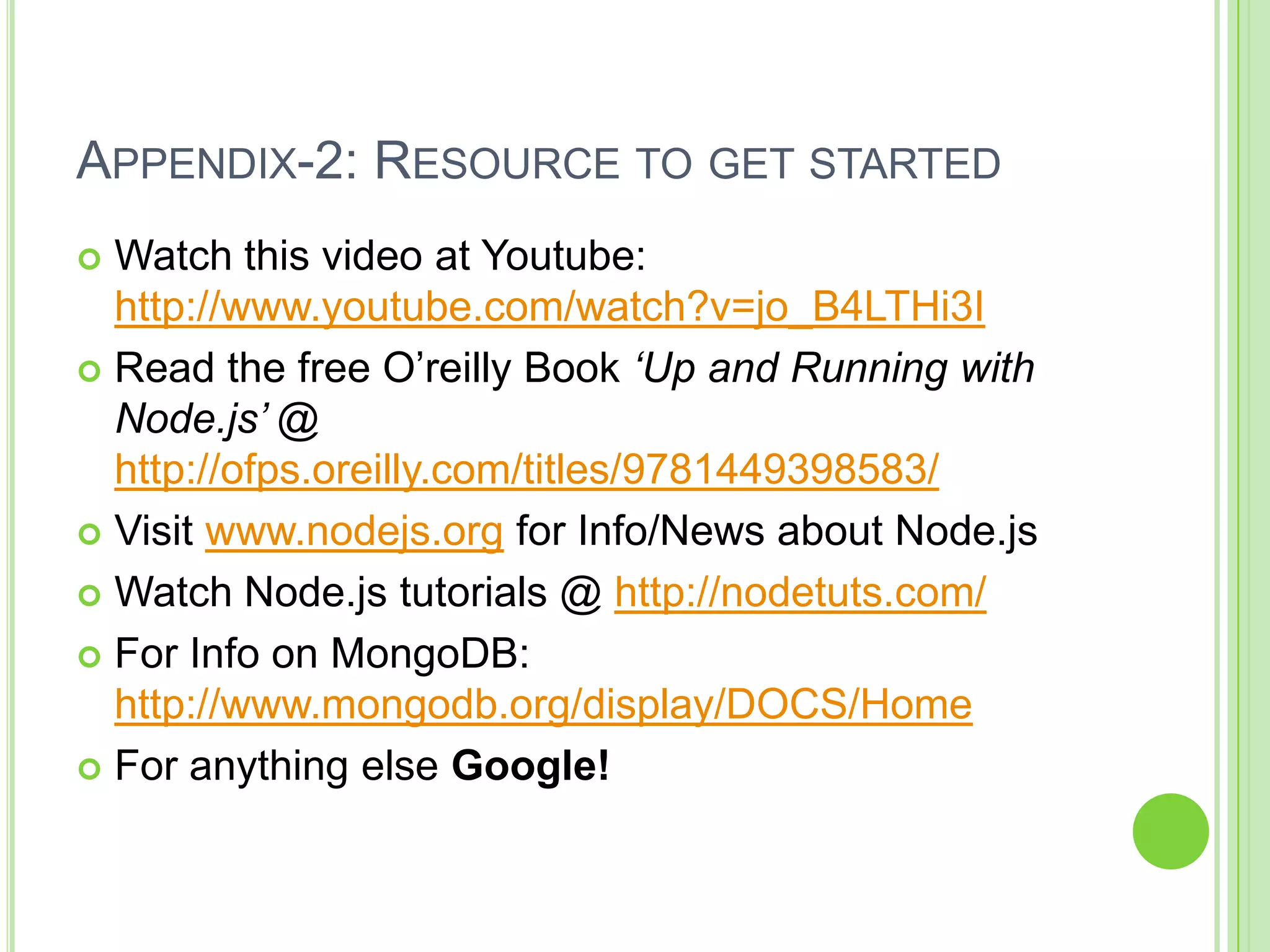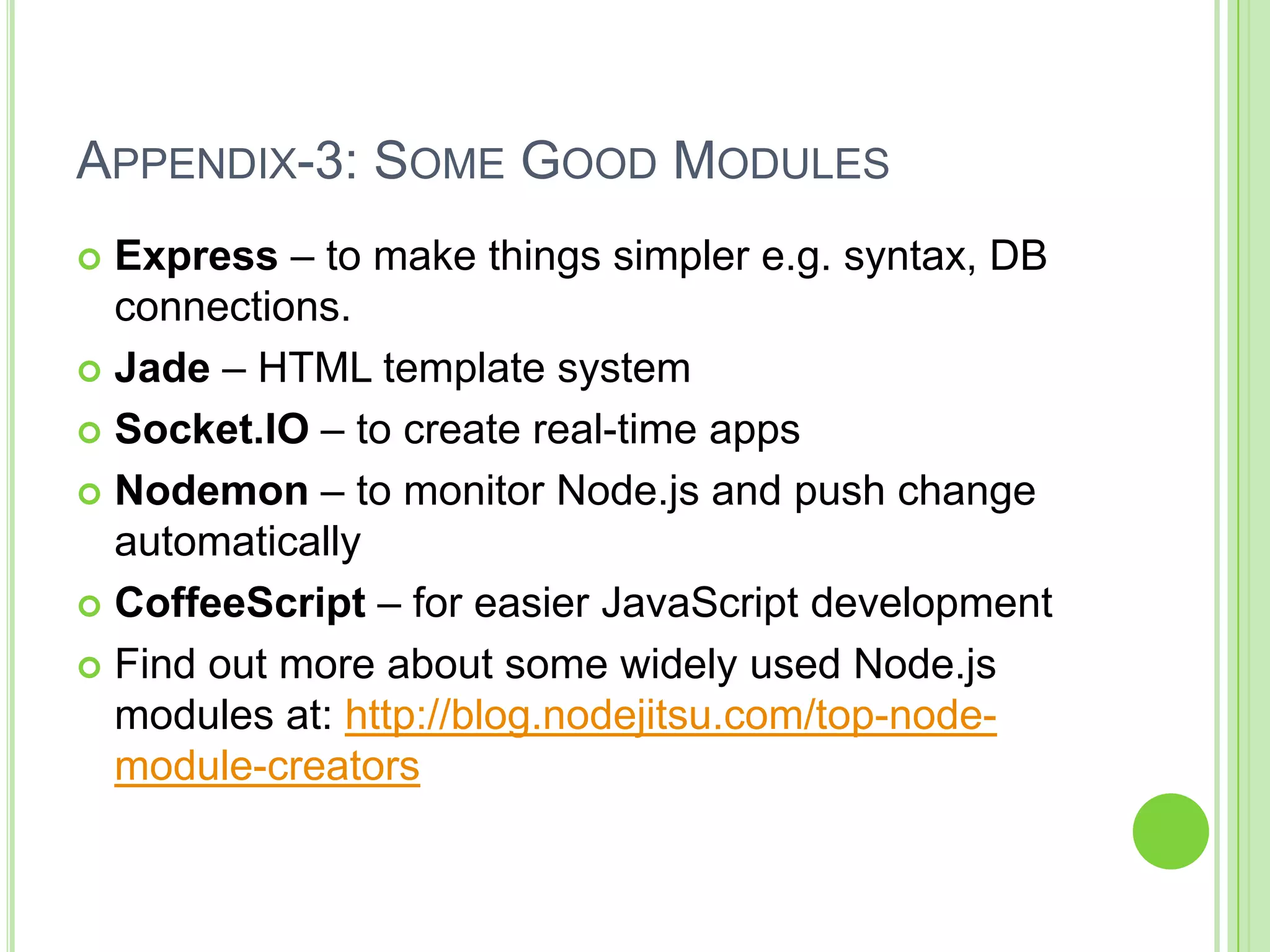The document provides an overview of Node.js, a server-side JavaScript framework developed by Ryan Dahl in 2009, highlighting its event-driven, non-blocking I/O model that makes it efficient for network applications. It includes examples of creating various servers and discusses the Node.js ecosystem, including the use of modules and the Node Package Manager (npm). Additionally, it addresses the situations where Node.js is advantageous and scenarios where it may not be ideal, along with a list of companies utilizing Node.js in production.
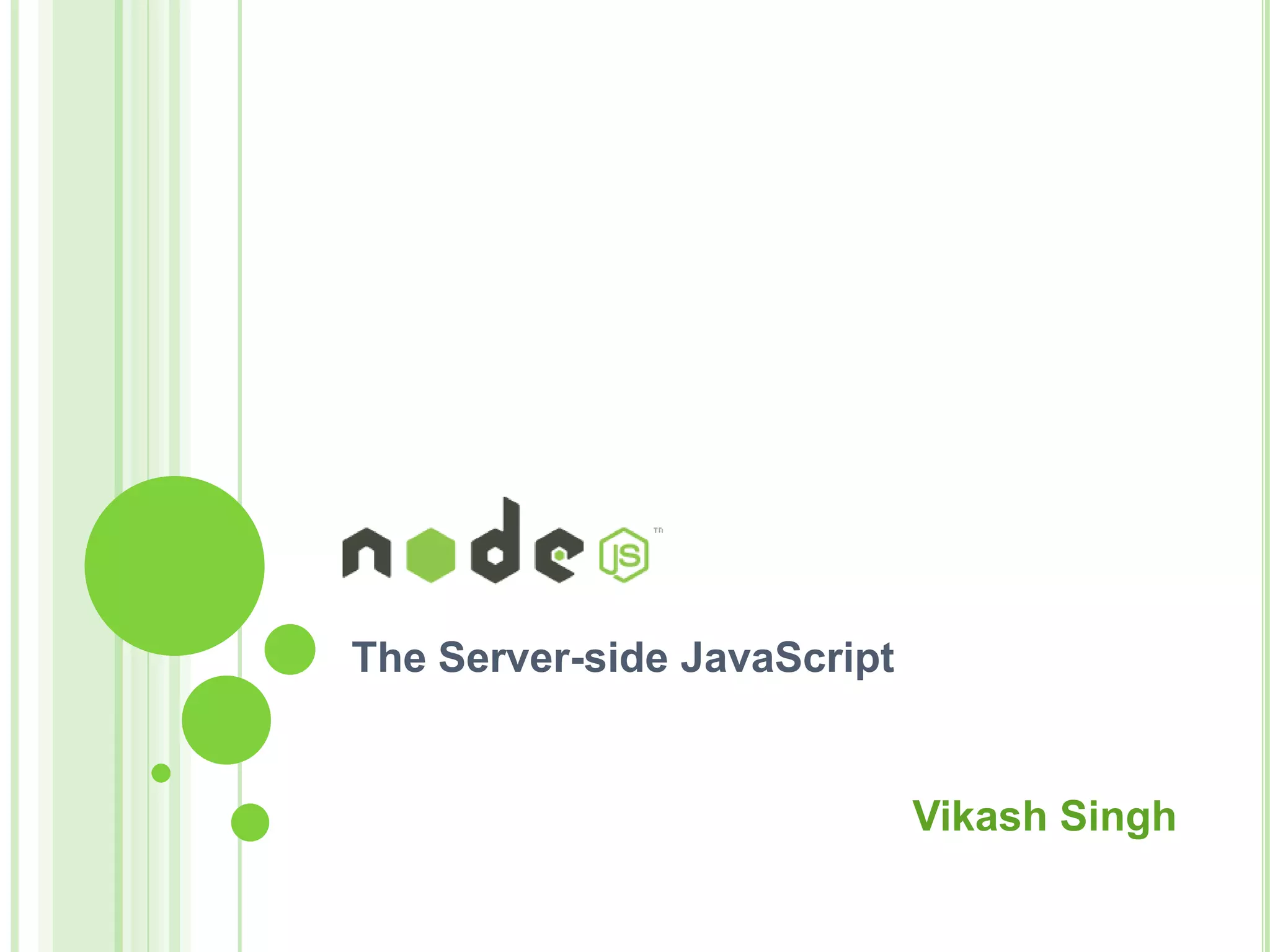

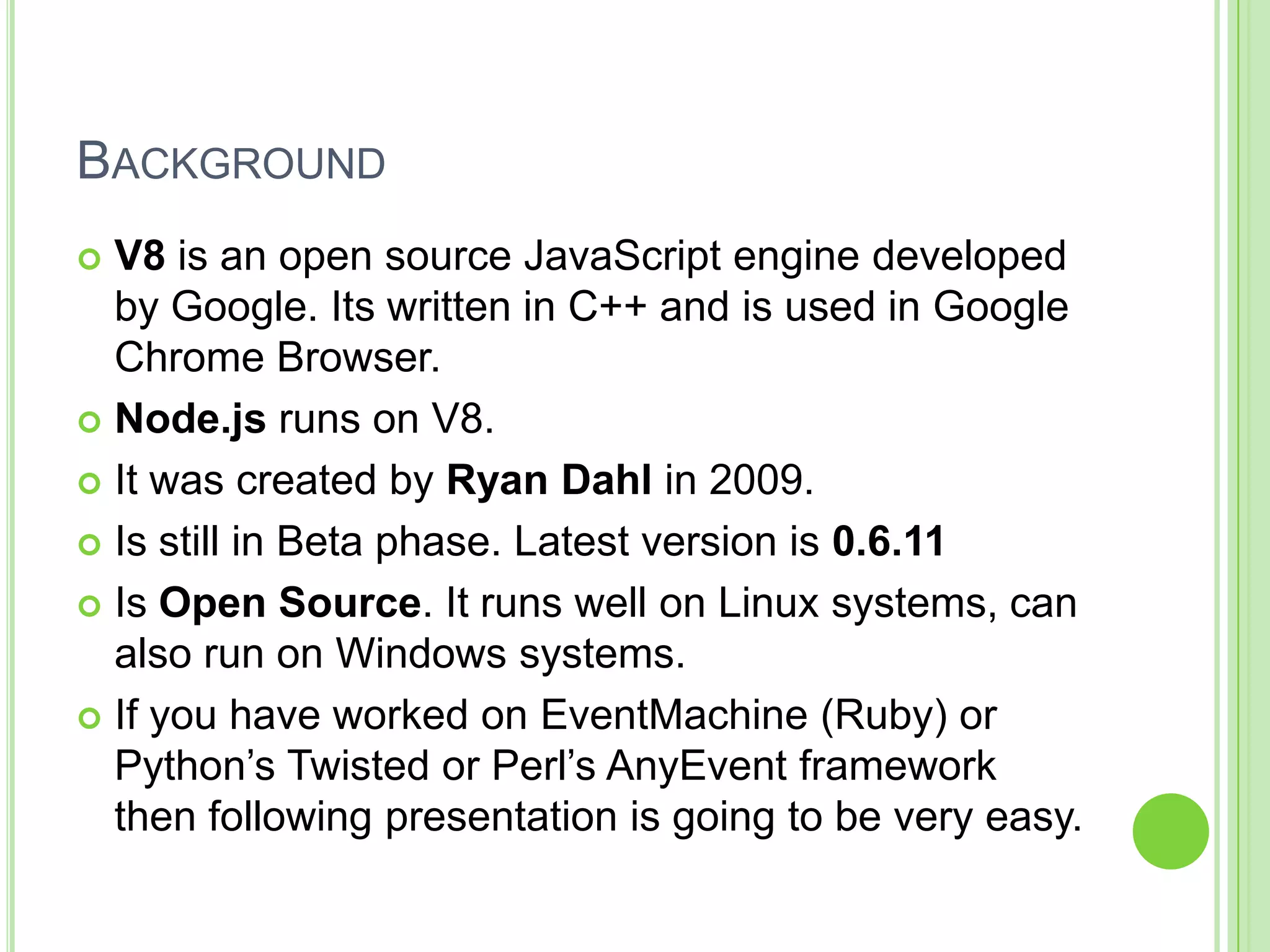
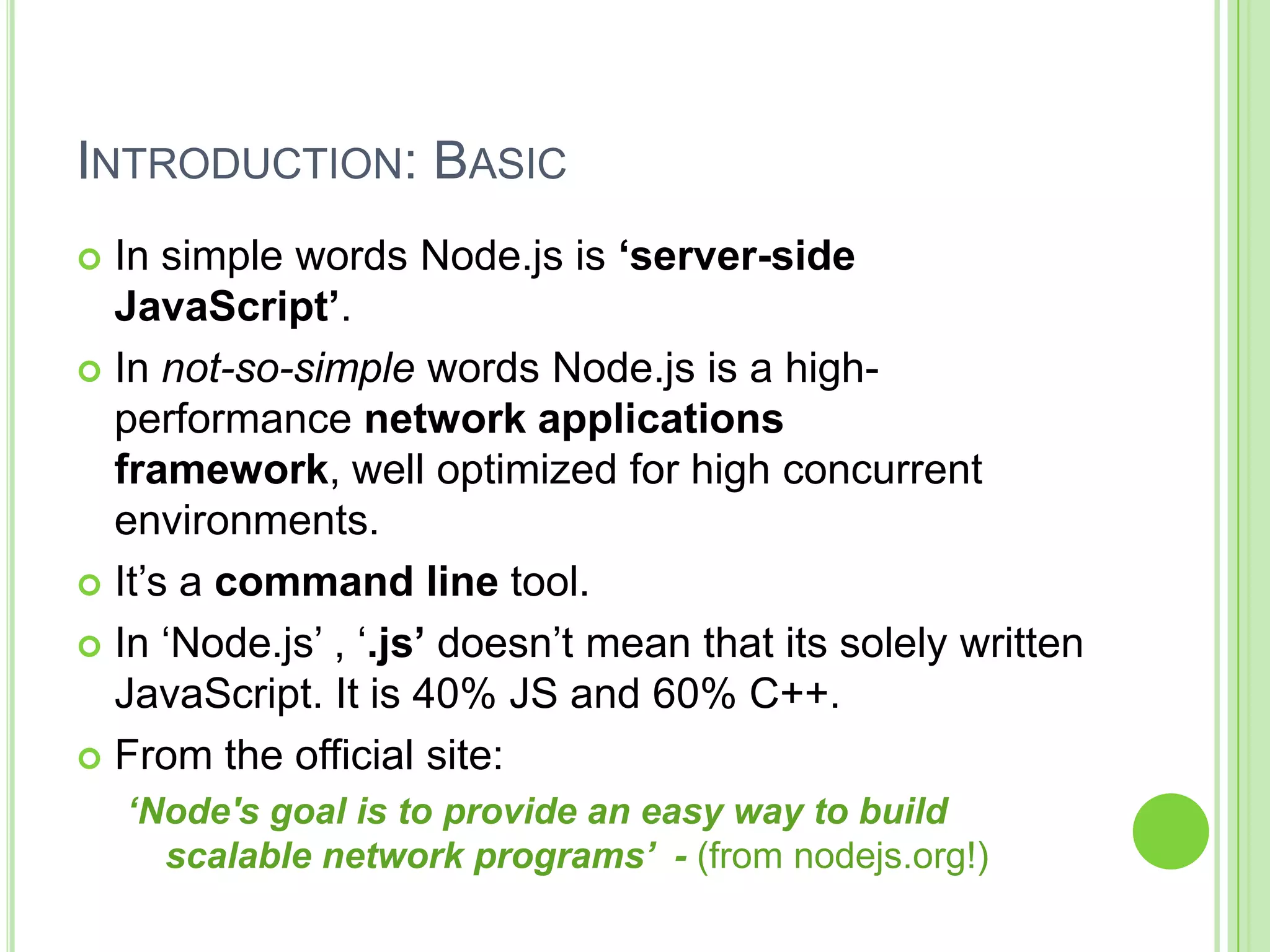
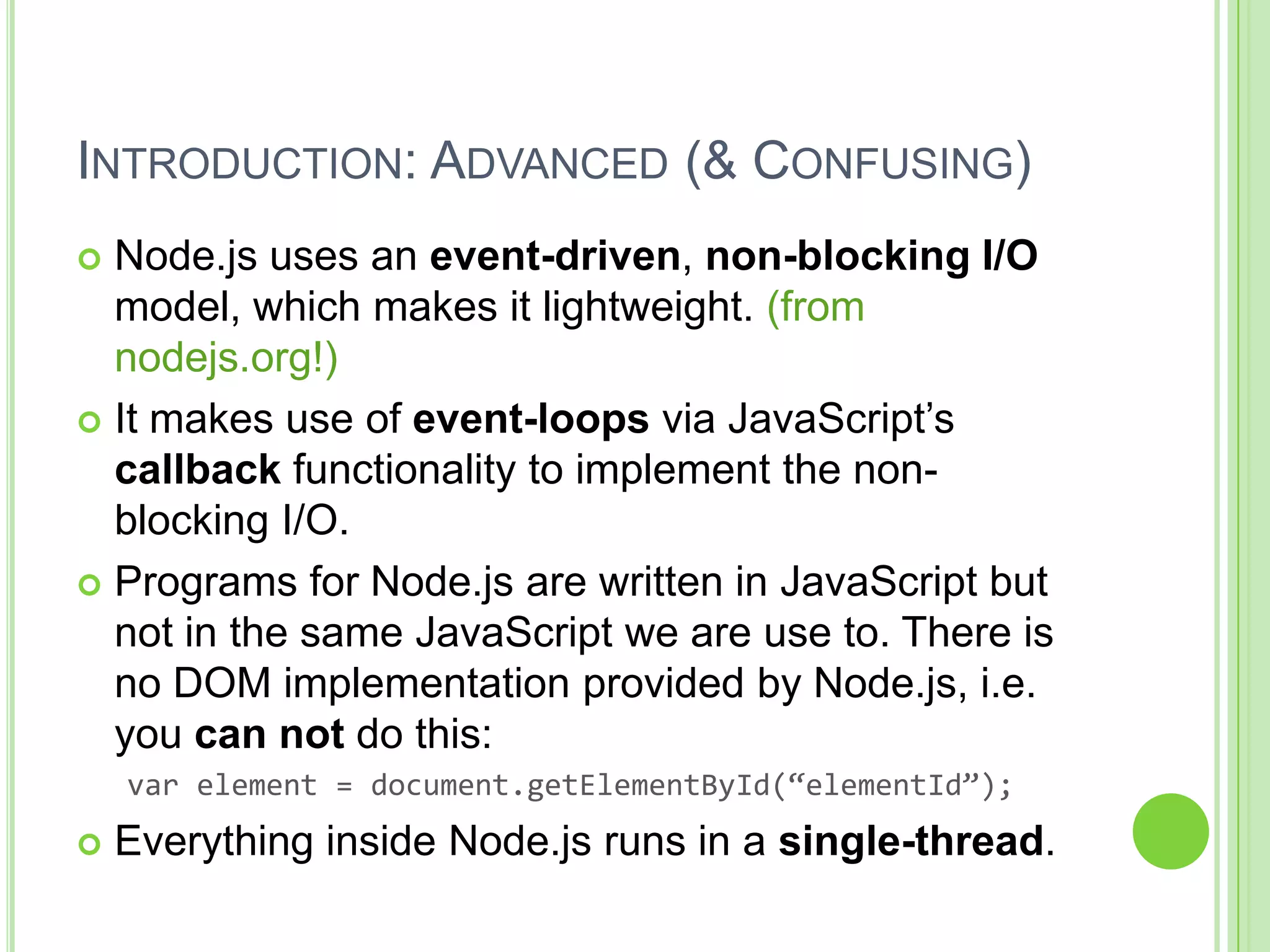
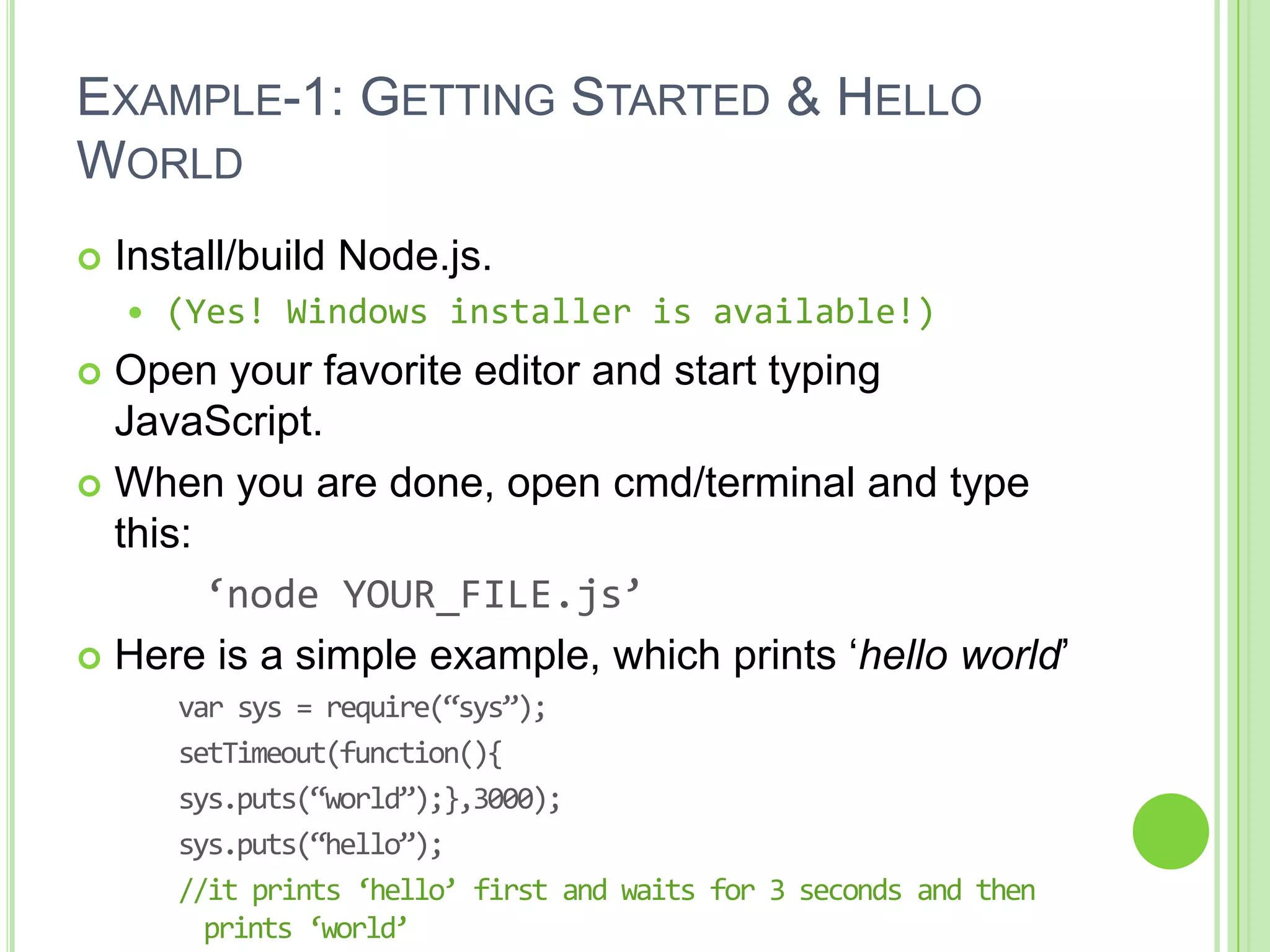
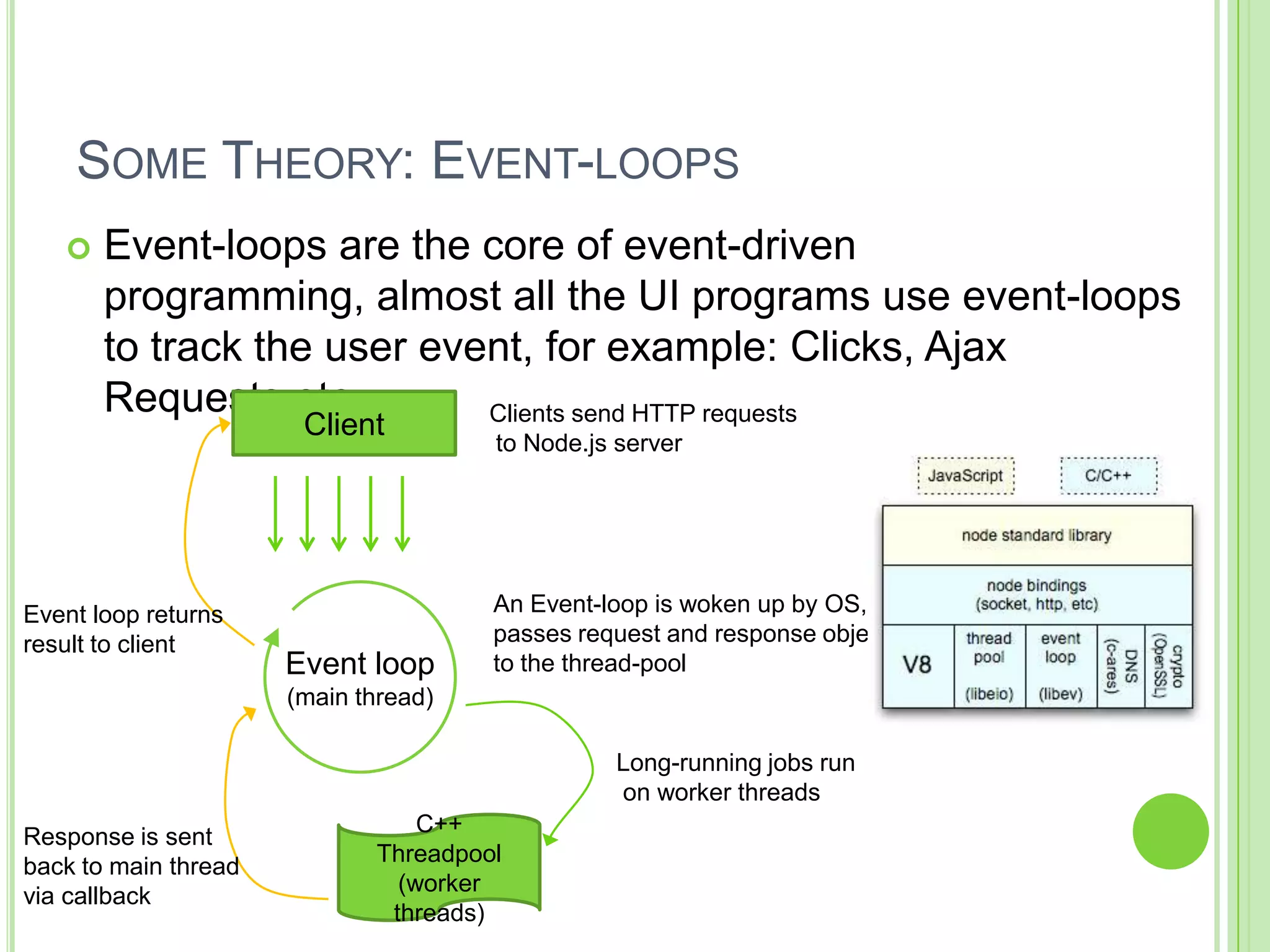
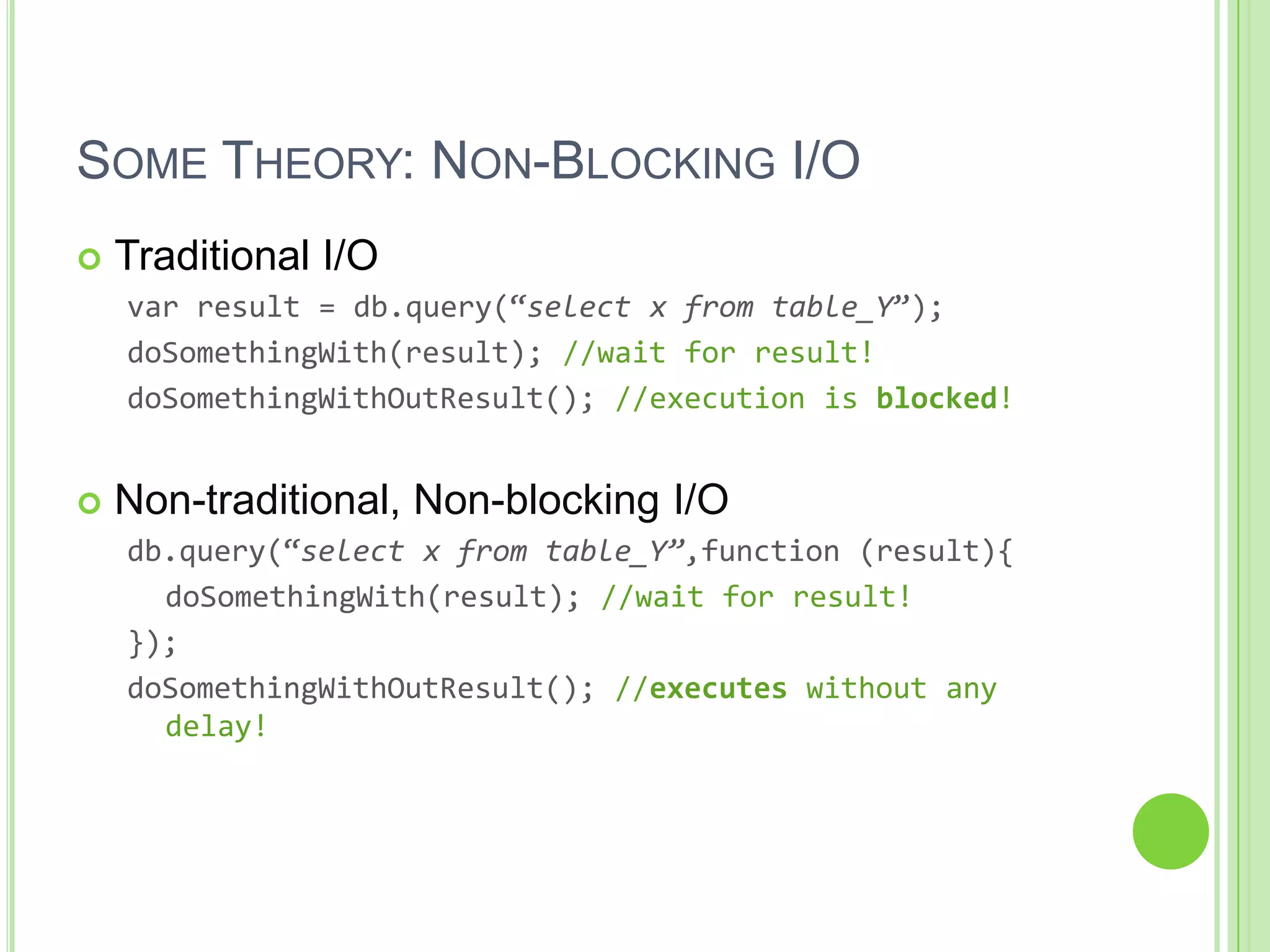
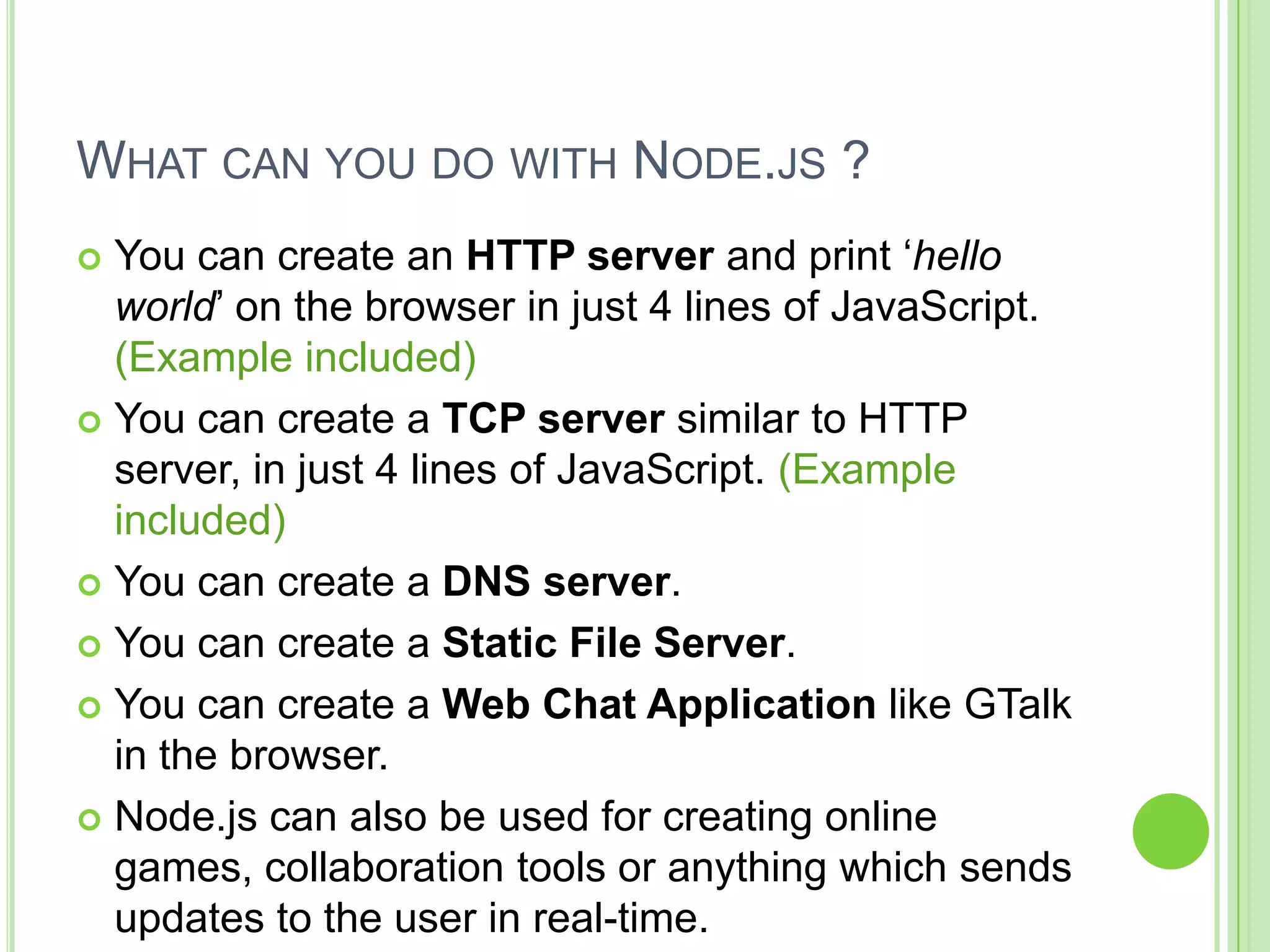
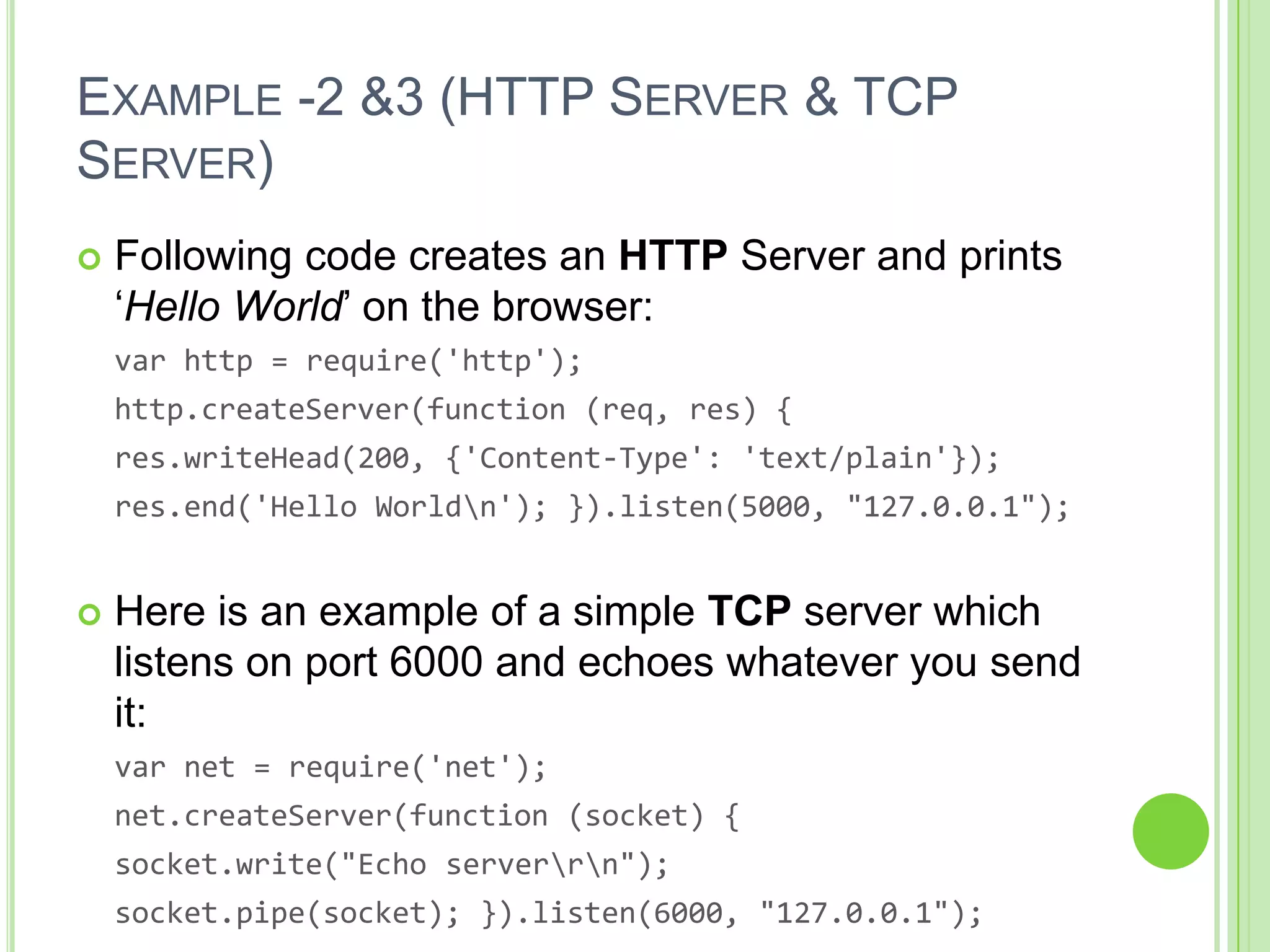
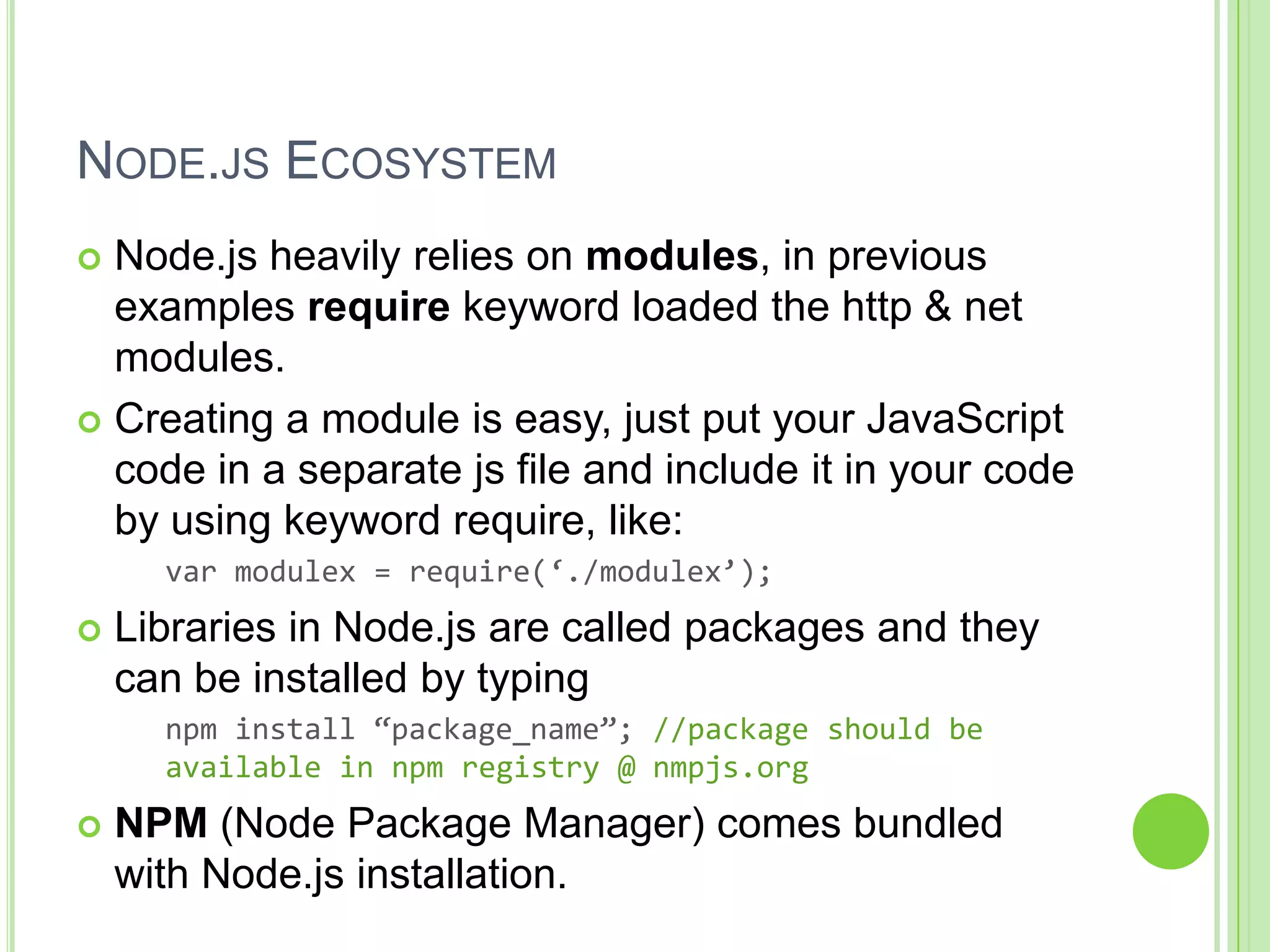
![EXAMPLE-4: LETS CONNECT TO A DB
(MONGODB)
Install mongojs using npm, a mongoDB driver for
Node.js
npm install mongojs
Code to retrieve all the documents from a collection:
var db = require("mongojs")
.connect("localhost:27017/test", ['test']);
db.test.find({}, function(err, posts) {
if( err || !posts) console.log("No posts found");
else posts.forEach( function(post) {
console.log(post);
});
});](https://image.slidesharecdn.com/nodejs-120224031311-phpapp01/75/Introduction-to-Node-js-12-2048.jpg)
